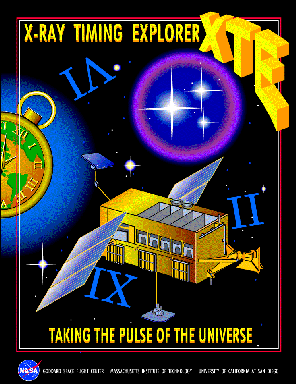 Back to the HEXTE home page
Back to the HEXTE home page

Another view
gzipped Postscript version
(large).
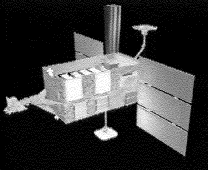 This Quicktime movie shows (rather confusingly) the rocking motion of
the HEXTE clusters on- and off-source, which is typically performed every
16 seconds. Other XTE videos may be found here (GSFC).
This Quicktime movie shows (rather confusingly) the rocking motion of
the HEXTE clusters on- and off-source, which is typically performed every
16 seconds. Other XTE videos may be found here (GSFC).
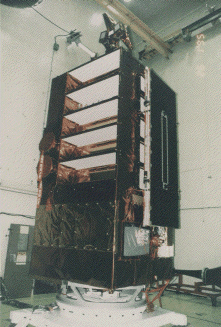 In full dress uniform, including the folded solar panels, and the ASM shadow
cameras on top. Below the 5 bays of the PCA in this view, the HEXTE is
covered by a thin layer of spacecraft thermal blanket.
In full dress uniform, including the folded solar panels, and the ASM shadow
cameras on top. Below the 5 bays of the PCA in this view, the HEXTE is
covered by a thin layer of spacecraft thermal blanket.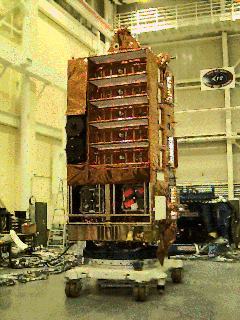 This view shows the XTE spacecraft instrument side with the ASM support
structure at top. The ASM itself, solar panels and high gain antennas
are not installed. The PCA and the HEXTE are readily visible; 3 of
the HEXTE phoswich detectors have orange labels covering their
collimators.
This view shows the XTE spacecraft instrument side with the ASM support
structure at top. The ASM itself, solar panels and high gain antennas
are not installed. The PCA and the HEXTE are readily visible; 3 of
the HEXTE phoswich detectors have orange labels covering their
collimators.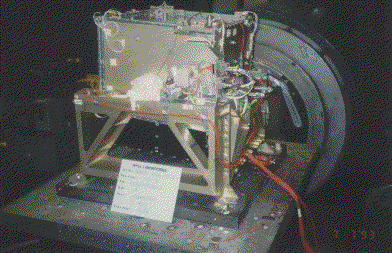
One of the HEXTE clusters on a vibration testing platform at Wyle Laboratories, complete with its rocking mechanism.
Photo credit: Bob Howe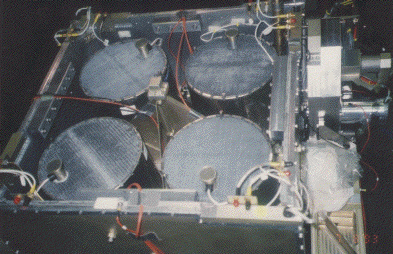
Top view of a HEXTE cluster, with its 4 phoswich detector modules in place. Visible are the collimators, each with their own gain control/calibration sources installed in the detector's field of view. Each cylindrical collimator has a diameter of about 7.2 in.
Photo credit: Bob Howe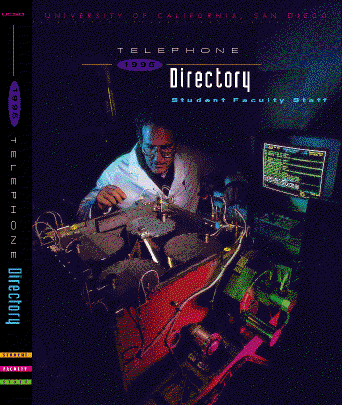
``Pictured on the cover is Dr. Richard Rothschild with one of the clusters of X-ray detector instruments designed, fabricated and tested at UCSD's Center for Astrophysics & Space Sciences for NASA's X-ray Timing Explorer. The instrument, along with others developed at the Massachusetts Institute of Technology and NASA's Goddard Space Flight Center, will provide important information on the nature of X-ray emitting objects, such as black holes, neutron stars, and white dwarfs. The products of stellar evolution, these extremeley dense objects exhibit enormous gravitational fields and are ultimately responsible for the generation of X-rays and gamma rays. Scheduled for launch in August 1995, the X-ray Timing Explorer will exploit the temporal variability of these stars on time scales from millionths of a second to months to explain how matter is transferred from one star to its binary companion, how this matter interacts with the intense magnetic fields present, and how X-ray beams are formed. The mission will also provide scientists with new understanding of the dynamics and life history of X-ray emitting objects.''
